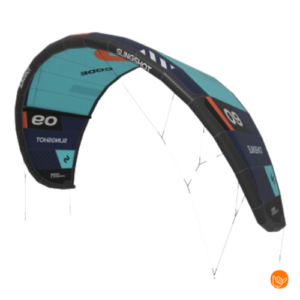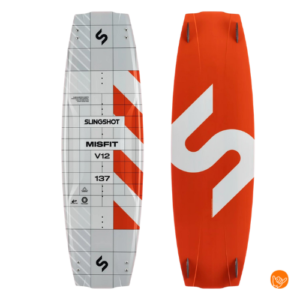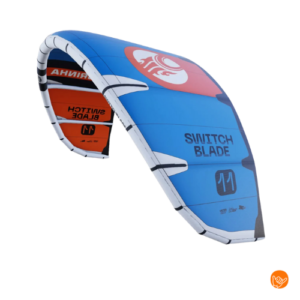A successful kitesurfing trip begins with thorough preparation on several fronts. You need to arrange documentation, purchase insurance, plan kitesurfing gear and take safety precautions. In addition, choosing the right destination for your skill level is crucial for an optimal kitesurfing vacation. This guide answers the most important questions about kitesurfing travel preparation.
What all do you need to arrange for a kitesurfing trip?
For a kitesurfing trip you should documentation, insurance, accommodation and transportation arrange. Begin preparations at least 6-8 weeks before departure. Check that your passport is still valid and arrange for any visas. Take out travel insurance that covers water sports activities.
Practicalities also require attention. Book your accommodation at a kitesurfing spot with good wind statistics for your travel period. Many kitesurfing destinations have seasonal wind patterns, so timing is essential for a successful kitesurfing vacation.
Also remember to tailor your kitesurfing schedule to local conditions. Inquire:
- Local kitesurfing rules and permits
- Medical facilities near your kitesurfing location
- Currency exchange and payment options
- Climate and weather conditions during your stay
- Availability of kitesurfing services and repair facilities
What kitesurfing equipment do you need while traveling?
For kitesurfing trips you have at least one kite, board, bar and harness needed. The exact gear depends on local wind conditions and your riding style. Many experienced kiters bring 2-3 kites in different sizes to be prepared for varying wind conditions.
The choice between bringing or renting kitesurf gear locally is crucial to your budget and comfort. Owning your own gear gives you the security of trusted kitesurfing equipment travel, but increases transportation costs and risk of damage. Renting locally saves weight and transportation concerns, but you are dependent on availability and quality.
A smart option is to use a flexible kitesurfing subscription for your trip. This gives you access to premium gear without the worries of transportation and maintenance. For kitesurfing trips, this is especially convenient because you can try out different kites suitable for local conditions.
Essential items for your kitesurfing equipment travel checklist:
- Kites suitable for local wind conditions (usually 9m, 12m and 14m)
- Board adapted to your riding style and local water conditions
- Bar and lines in good condition
- Harness that is comfortable during long sessions
- Wetsuit or lycra depending on water temperature
- Helmet and impact vest for added safety
- Repair kit for minor repairs on the go
How to choose the best kitesurfing destination for your level?
Choose the best kitesurfing destination based on wind conditions, water depth, wave height and local facilities that suit your skills. Beginners benefit from shallow, sheltered waters with steady winds between 15-20 knots. Advanced kiters can handle more challenging conditions with more wind and waves.
For beginner kitesurfers, kitesurfing destinations such as the Red Sea, Brazil (Cumbuco) or Cape Verde are ideal. These locations offer Constant wind, flat water and good kitesurfing schools. The infrastructure is well developed with rescue services and medical facilities nearby.
Advanced kiters can choose from more challenging kitesurfing destinations:
- Tarifa (Spain) - strong winds and waves for wave riding
- Maui (Hawaii) - perfect conditions for freestyle and big air
- Mauritius - combination of lagoon and ocean conditions
- Zanzibar - tropical breezes with different spots for every skill level
Always research the seasonal wind patterns of your chosen destination. The best kitesurf planning takes into account local wind statistics, rain periods and temperature to avoid disappointment.
What are the most important safety tips for kitesurfing abroad?
Safe kitesurfing abroad required Knowledge of local conditions, emergency procedures and communication with locals. Always check with local kitesurf schools about dangerous areas, currents and weather patterns. Never go out on the water alone in unfamiliar conditions.
Local kitesurfing rules can differ greatly from what you're used to. Some destinations have specific times when kitesurfing is allowed, certain areas that are prohibited, or mandatory insurance. Never ignore these rules - it can lead to fines or dangerous situations.
Essential safety tips for kitesurfing tips abroad:
- Check your kitesurf gear extra thoroughly after transportation
- Always test your safety systems before your first session
- Learn basic words in the local language for emergencies
- Keep contact information for local emergency services in your phone
- Kitesur always within sight of other people
- Respect local kitesurfers and give them priority at their own spots
Make sure you travel insurance water sports activities covers and keep all policy information digitally accessible. When in doubt about conditions, seek advice from local professionals - they know the circumstances best.
How do you transport kitesurf gear safely while traveling?
Safe transportation of kitesurfing gear required proper packaging, knowledge of aviation regulations and adequate insurance. Always use a sturdy kitesurf travel bag with extra padding around fragile parts. Check with your airline for specific rules on sports equipment transportation.
Most airlines have special rates for sports equipment, but weight and size restrictions vary widely. Some airlines charge an additional €50-150 each way for kitesurfing gear. Plan these costs into your kitesurfing travel budget.
Practical tips for safe gear transport:
- Let air out of your kites and fold them carefully
- Protect your board with a board bag and bubble wrap
- Remove sharp parts from your bar and pack them separately
- Take photos of your gear before departure for insurance purposes
- Keep important parts (pump, repair kit) in carry-on luggage
- Clearly label your bags with contact information
An alternative to carrying gear is to use a flexible subscription system. This completely eliminates transportation risks and costs. For regular travelers, this can be a cost-effective solution that also provides access to the latest kitesurfing gear at various destinations.
For your next kitesurfing trip, consider the benefits of a flexible subscription that takes away your transportation worries. You can also get a complete put together a set that perfectly suits your travel destination. For personal advice on the best gear for your kitesurfing schedule you can always Get in touch with us.




























